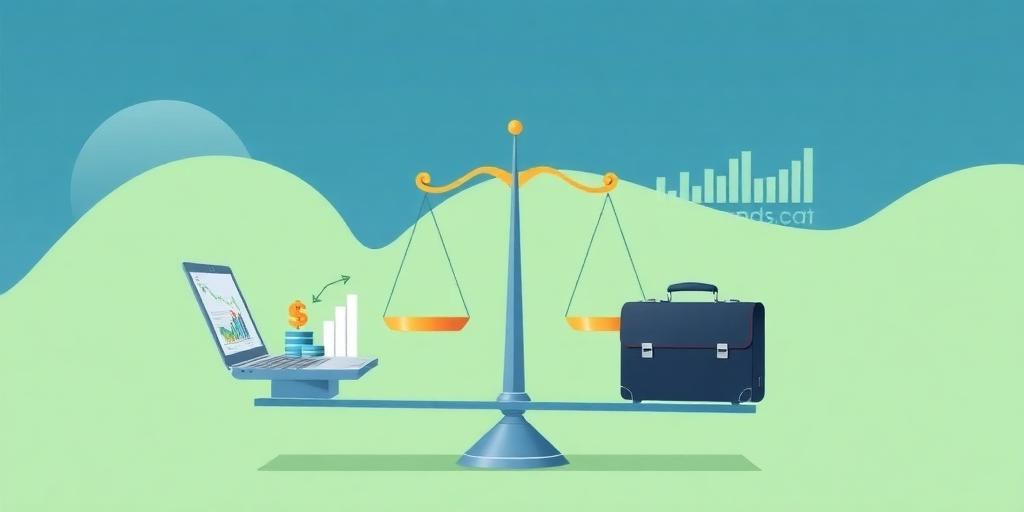The Critical Distinction Between Speculating and Investing
In the financial world, the terms "speculating" and "investing" are often used interchangeably, but understanding the fundamental differences between them is crucial for anyone looking to grow their wealth responsibly. While both involve deploying capital with the hope of generating returns, their approaches, risk profiles, and time horizons diverge significantly.
Investing: A Foundation of Value and Long-Term Growth
Investing is characterized by a long-term approach focused on the intrinsic value of an asset. Investors meticulously analyze financial statements, assess market conditions, and evaluate the competitive landscape to determine whether an asset is undervalued. Their decisions are rooted in fundamental analysis, aiming to acquire assets that will appreciate steadily over time.
Key tenets of investing include:
- Due Diligence: Thorough research and analysis of the investment target.
- Long-Term Horizon: Patience and a willingness to hold assets for extended periods, allowing value to compound.
- Risk Management: Diversifying portfolios and employing strategies to mitigate potential losses.
- Value-Oriented Approach: Seeking assets that are priced below their intrinsic worth.
Speculating: Embracing Risk for Rapid Gains
Speculating, on the other hand, is a short-term strategy driven by market momentum and price fluctuations. Speculators aim to profit from short-term price swings, often employing leverage to amplify potential gains (and losses). Unlike investors, speculators may not be concerned with the underlying value of an asset, focusing instead on technical indicators, news events, and market sentiment.
Characteristics of speculating include:
- Short-Term Focus: Rapid entry and exit from positions to capitalize on short-term price movements.
- High Risk Tolerance: Willingness to accept substantial losses in pursuit of outsized returns.
- Leverage Usage: Employing borrowed capital to magnify potential gains (and losses).
- Technical Analysis Emphasis: Relying on charts, patterns, and indicators to predict price movements.
Key Differences Summarized
| Feature | Investing | Speculating | | ---------------- | --------------------------------------------- | --------------------------------------------- | | Time Horizon | Long-term (years or decades) | Short-term (days, weeks, or months) | | Risk Tolerance | Lower | Higher | | Analysis Focus | Fundamental analysis (intrinsic value) | Technical analysis (price movements) | | Return Expectation | Moderate, sustainable growth | High, rapid gains | | Approach | Building wealth steadily over time | Capitalizing on short-term market inefficiencies |
The Importance of Self-Awareness
The choice between speculating and investing depends on individual risk tolerance, financial goals, and time commitment. It is essential to understand your own investment style and to allocate capital accordingly. While speculating can offer the potential for rapid gains, it also carries a significant risk of loss. Investing, while generally less volatile, requires patience and a long-term perspective.
Ultimately, a well-rounded financial strategy may incorporate elements of both investing and speculating, but it is crucial to differentiate between the two and to manage risk appropriately. Whether you choose to be a value-driven investor or a nimble speculator, knowledge, discipline, and a clear understanding of your own risk profile are essential for success.









